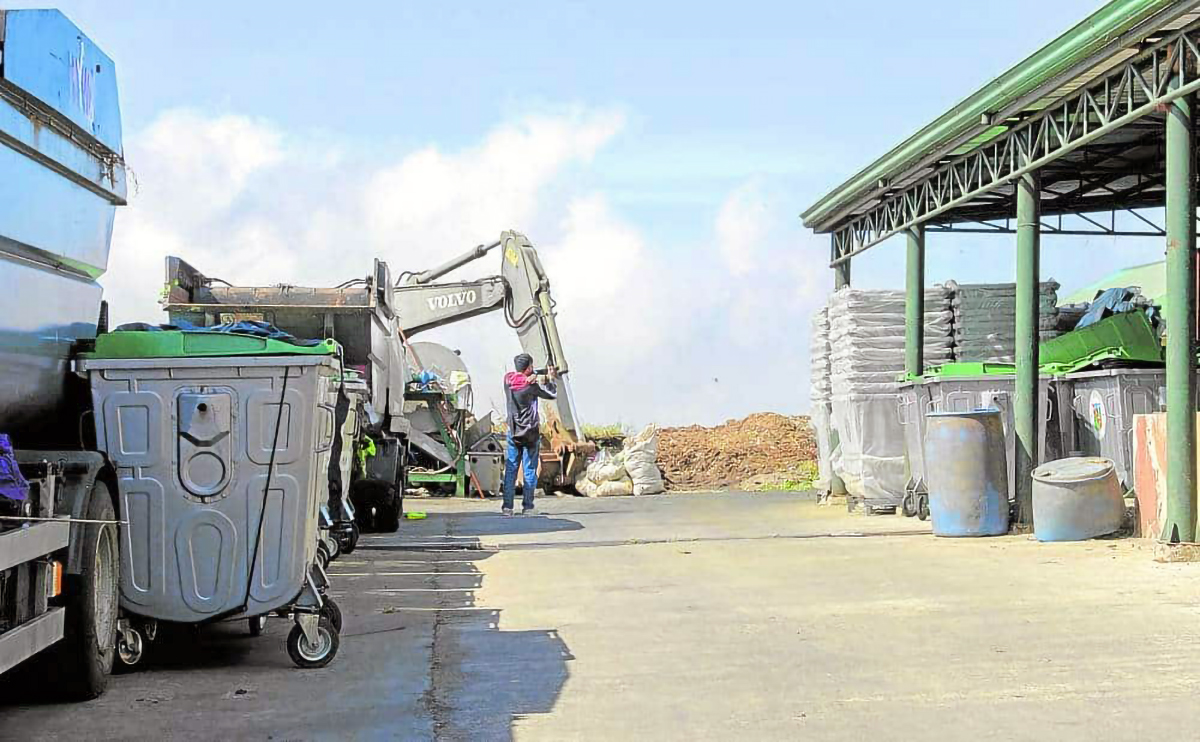Baguio eyes trash cut as landfill closure looms

WASTE REDUCTION The Baguio government has cleaned up city’s old dump in Barangay Irisan and turned it into an ecopark. Baguio is studying measures to separate and process valuable
BAGUIO CITY—Bracing for the October shutdown of Tarlac’s biggest commercial landfill, the Baguio government has embarked on a “waste-to-reuse” program that will shred plastic and garments, profit from recyclable waste, and reprocess roofing materials and metallic debris to reduce the volume of residual garbage that will be shipped to an alternative dump.
Baguio has been spending between P180 million and P230 million yearly to send garbage to the commercial engineered sanitary landfill operated by the Metro Clark Waste Management Corp. in Capas, Tarlac, which the Bases Conversion and Development Authority intends to close when its contract expires by October. Last week, Metro Clark said it was contesting BCDA’s decision regarding its 100-hectare facility.
READ: BCDA: No looming garbage crisis in Central Luzon
Baguio has already committed to reserve 550 tons of daily trash for a private waste-to-energy (WTE) plant that is being developed for the BLISTT area in Sablan, Benguet, under a “feedstock agreement” that was signed last year. BLISTT is the latest metropolis created by law (Republic Act No. 11932) and stands for Baguio and the adjoining Benguet towns of La Trinidad (its capital), Itogon, which hosts the country’s oldest mines, and vegetable producers Sablan, Tuba and Tublay.
But because a WTE facility would take time to complete, Mayor Benjamin Magalong on Tuesday cleared a plan to build a central material recovery facility (MRF), said Eugene Buyuccan, Baguio general services officer, at a Wednesday briefing.
Downtown garbage
It would be outfitted with mechanical segregators, shredders and glass pulverizers, he said. The central MRF is rising on a 1-ha property near the Baguio Daily Farm that serves as the government’s waste transfer station before trucks carrying an average of 190 tons of waste leave for Capas.
The Department of Environment and Natural Resources has financed five regular MRFs for several barangay clusters, he said, but a central MRF would process waste collected from Baguio’s busy downtown areas, and trash generated by visitors and schools.
Baguio’s population has grown to 366,358 people as of the 2020 census. At least 1.042 million tourists visited the city last year.
Many households have heeded local ordinances that require them to separate plastics, soda bottles and cardboard containers from kitchen waste, Buyuccan pointed out, which has made garbage collection more efficient. Each week, household trash is collected by 22 trucks manned by three city employees and eight volunteers.
In a June 6 interview, City Administrator Bonifacio dela Peña said Baguio might be forced to use a landfill in Pampanga province, which would increase the city’s waste-hauling expenses. A much closer landfill in Pangasinan’s Urdaneta City was closed for repairs.
Alternative
Buyuccan said he was sent to explore landfills in the Pampanga towns of Porac and Floridablanca, but the city government had yet to decide which facility it would use to replace Capas should it become necessary.
“We don’t want to be caught flatfooted,” he said.
In his briefing, Buyuccan referred to exploratory talks with a cement manufacturer that requires specific waste products to fuel its manufacturing plants. The company had previously engaged the city regarding a feedstock arrangement decades ago.
Part of Baguio’s solution is to ban single-use plastic at the city market and major groceries, which is being enforced.
Magalong has been relying on businessman Robert John Sobrepeña’s initiative to build a 15-megawatt WTE plant in Sablan, but Dela Peña said the city’s alternative solution is to develop its own WTE project at a government property in Barangay Santo Tomas using Korean technology.
A separate pitch was recently made by another investor to build a WTE plant along Kennon Road using American technology.